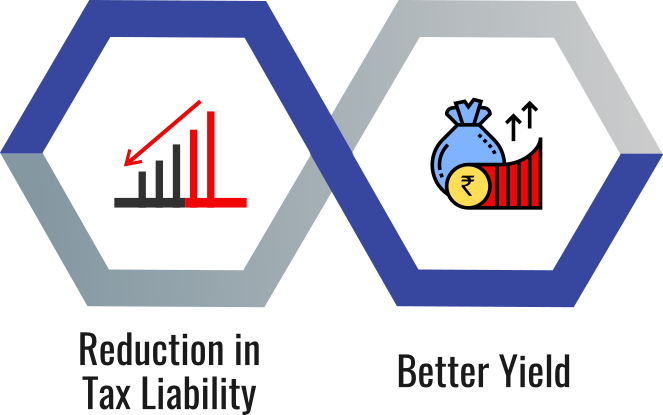Tax Planning
Indian Income-tax levies tax on individual taxpayers based on a slab system. A slab system means different tax rates are prescribed for different ranges of income. Income tax has classified three categories of “individual “taxpayers such as:
- Individuals (aged less than of 60 years)
- Senior citizens (60 to 80 years of age)
- Super senior citizens (aged more than 80 years)

Income Tax Slab Rates for FY 2021-22 (AY 2022-23)
| Income Tax Slab | New Regime Income Tax Slab Rates FY 2021- 22 (Applicable for All Individuals & HUF) |
| Rs 0.0 – Rs 2.5 lakh | NIL |
| Rs 2.5 lakh – Rs 3.00 lakh | 5% (tax rebate u/s 87a is available) |
| Rs 3.00 lakh – Rs 5.00 lakh | |
| Rs 5.00 lakh- Rs 7.5 lakh | 10% |
| Rs 7.5 lakh – Rs 10.00 lakh | 15% |
| Rs 10.00 lakhs – Rs 12.50 lakh | 20% |
| Rs 12.5 lakhs – Rs 15.00 lakh | 25% |
| > Rs 15 lakh | 30% |
NOTE:
- Please note that the tax rates in the New tax regime is the same for all categories of Individuals, i.e Individuals & HUF upto 60 years of age, Senior citizens above 60 years upto 80 years, and Super senior citizens above 80 years. Hence no increased basic exemption limit benefit will be available to senior and super senior citizens in the New Tax regime.
- Surcharge applicable as per tax rates below in all categories mentioned above:
- 10% of Income tax if total income > Rs.50 lakh
- 15% of Income tax if total income > Rs.1 crore
- 25% of Income tax if total income > Rs.2 crore
- 37% of Income tax if total income > Rs.5 crore
Income tax slab rate for Old Tax regime – FY 2020-21 (AY 2021-22)
Income tax slabs for individual aged below 60 years & HUF
| Income Tax Slab | Individuals Below the Age Of 60 Years – Income Tax Slabs | Amount |
| Up to Rs 2.5 lakh | NIL | - |
| Rs. 2.5 lakh - Rs. 5 lakh | 5% | 12500 |
| Rs 5.00 lakh – Rs 10 lakh | 20% | 100000 |
| Above Rs 10Lakhs | 30% | - |
| Income Tax Slab | Individuals Above The Age Of 80 Years – Income Tax Slabs | Amount |
| Up to Rs 5 lakh | NIL | - |
| Rs 5.00 lakh – Rs 10 lakh | 20% | 100000 |
| Rs 5.00 lakh – Rs 10 lakh | 20% | 100000 |
| Rs 10Lakhs & Above | 30% | - |
NOTE:
- An additional 4% Health & education cess will be applicable on the tax amount calculated as above.
- Surcharge:
- 10% of income tax, where total income exceeds Rs.50 lakh up to Rs.1 crore.
- 15% of income tax, where the total income exceeds Rs.1 crore.
Let’s understand this better with Examples
CASE 1:
Imagine the annual salary of Mr.XYZ 25-year old individual, is ₹5 Lakhs. After the standard deduction and the income tax deductions under Section 80C (PPF & NPS) and Section 10 (13A) (Exemption on HRA) of the Income Tax Act, 1961, his taxable income stands to be ₹2.78 Lakhs. As the income over ₹2.5 Lakhs is taxed at 5%, his total due tax comes to ₹1,400. As per Section 87A of the Income Tax Act, 1961, Mr.XYZ gets full tax rebate his annual income is up to ₹5 Lakhs.
CASE 2:
Assume the yearly salary of Mrs.ABC, a 35-year old individual, is ₹10 Lakhs. After the deductions under Section 80C , Section 80D and Section 10 (13A) and the standard deductions, her taxable income stands to be ₹7 Lakhs. As income over ₹5 Lakhs is taxed at ₹12,500 + 20%, his total due tax comes to ₹52,500. Mrs.ABC will also be charged 4% Health & Education Cess which increases the tax amount to ₹54,600.
CASE 3:
Similarly, in another instance, the annual salary of Mrs.UVW , a 40-year old
individual, is ₹15 Lakhs after the standard deduction and the deductions under Section 80C and Section 10 (13A) her taxable income comes to be ₹11.5 Lakhs as income over ₹10 Lakhs is taxed at ₹1,12,500 + 30%, her total due tax comes to ₹1,57,500. After adding the 4% Health & Education Cess, Mrs.UVW will have to pay the tax amount of ₹1,63,800.
Sections
| Sr No | Sections | Eligible Investments |
| 1 | 80C | Investment made in PPF, EPF, LIC premium, Equity linked saving scheme, principal amount payment towards home loan, stamp duty and registration charges for purchase of property, Sukanya samriddhi yojana (SSY) , National saving certificate (NSC) , Senior citizen savings scheme (SCSS), ULIP, tax saving FD for 5 years, Infrastructure bonds etc. |
| 2 | 80CCD (1) | Employee’s contribution under section 80CCD (1) Maximum deduction allowed is least of the following • 10% of salary (in case taxpayer is employee) • 20% of gross total income (in case of self employed) • Rs 1.5 Lakh (limit allowed u/s 80C) |
| 3 | 80CCD (1b) | Additional deduction of Rs 50,000 is allowed for amount deposited to NPS account. |
| 4 | 80CCD (2) | Employers contribution is allowed for deduction upto 10% of basic salary plus dearness allowance under this section. Benefit in this section is allowed only to salaried individuals and not self employed. |
| 5 | 80D | You (as an individual or HUF) can claim a deduction of Rs.25,000 under section 80D on insurance for self, spouse and dependent children. An additional deduction for insurance of parents is available up to Rs 25,000, if they are less than 60 years of age. If the parents are aged above 60, the deduction amount is Rs 50,000 |
| 6 | 80DDB | A deduction up to Rs.40,000 is available to a resident individual or a HUF. It is available with respect to any expense incurred towards treatment of specified medical diseases or ailments for himself or any of his dependents |
| 7 | 80G | The various donations specified in u/s 80G are eligible for deduction up to either 100% or 50% with or without restriction. The donations above Rs 2000 should be made in any mode other than cash to qualify for 80G deduction. |
| 8 | 80GG | a. Section 80GG deduction is available for rent paid when HRA is not received. The taxpayer, spouse or minor child should not own residential accommodation at the place of employment b. The taxpayer should not have self-occupied residential property in any other place c. The taxpayer must be living on rent and paying rent d. The deduction is available to all individuals Deduction available is the least of the following: a. Rent paid minus 10% of adjusted total income b. Rs 5,000/- per month c. 25% of adjusted total income* |
| 9 | 80 TTA | If you are an individual or an HUF, you may claim a deduction of maximum Rs 10,000 against interest income from your savings account with a bank, co-operative society, or post office. |

